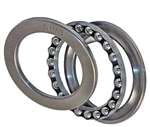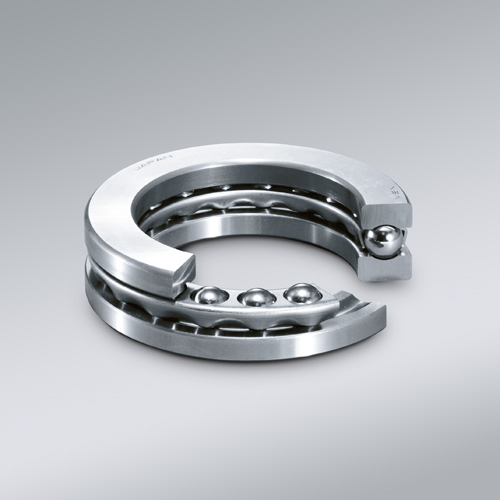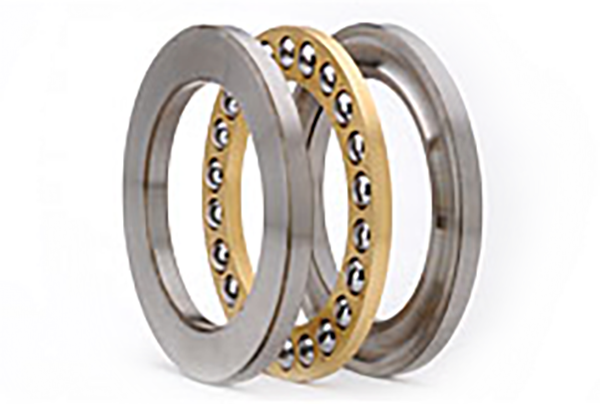Considerations for Selecting the Appropriate Type and Size of Thrust Bearing
Choosing the right type and size of thrust bearing for a specific application is crucial to ensure optimal performance and longevity. Here are the key considerations:
- Load Capacity: Determine the axial load the bearing will experience. Select a thrust bearing with a load capacity that exceeds the application’s requirements.
- Type of Load: Consider whether the load is purely axial or if there are radial components. This will help determine whether a ball or roller thrust bearing is more suitable.
- Speed: Evaluate the speed at which the bearing will operate. High-speed applications may require bearings with specialized designs to manage heat and friction.
- Size and Space Constraints: Measure the available space for the bearing. Choose a bearing size that fits within the designated area.
- Lubrication: Assess the lubrication conditions of the application. Some bearings may require external lubrication, while others are self-lubricating.
- Temperature and Environment: Consider the operating temperature and environmental conditions. Extreme temperatures or harsh environments may necessitate bearings with special coatings or materials.
- Accuracy and Precision: Determine the required level of precision for the application. High-precision applications may need bearings with tighter tolerances.
- Mounting and Installation: Evaluate the mounting options and ease of installation. Some bearings require specific mounting procedures.
- Budget: Factor in the budget for the bearing. High-performance bearings with specialized features may come at a higher cost.
By carefully considering these factors, you can select the appropriate type and size of thrust bearing that best suits the specific requirements of your application.
Extending the Lifespan of Thrust Bearings Through Maintenance
Proper maintenance practices are essential for maximizing the lifespan and performance of thrust bearings. Here are specific maintenance practices that can help extend their lifespan:
- Regular Lubrication: Ensure that thrust bearings are properly lubricated with the appropriate lubricants according to manufacturer recommendations. Proper lubrication reduces friction and wear.
- Clean Environment: Keep the surrounding environment clean and free from contaminants that could infiltrate the bearing and cause damage.
- Alignment: Ensure accurate alignment of components to prevent uneven loads and stress on the thrust bearing.
- Monitoring: Implement regular monitoring of bearing conditions through vibration analysis, temperature checks, and visual inspections.
- Load Management: Avoid subjecting thrust bearings to loads beyond their rated capacities, as this can lead to premature wear and failure.
- Replacement: Promptly replace thrust bearings if signs of wear, damage, or performance degradation are detected.
By adhering to these maintenance practices, the lifespan of thrust bearings can be significantly extended, ensuring reliable and efficient operation of the equipment they are installed in.
Impact of Proper Lubrication on Thrust Bearing Performance and Lifespan
Proper lubrication plays a crucial role in enhancing the performance and extending the lifespan of thrust bearings:
- Reduced Friction: Lubrication forms a protective film between the rolling elements and raceways, reducing friction and minimizing wear. This results in smoother operation and lower energy consumption.
- Heat Dissipation: Lubricants help dissipate the heat generated during bearing operation, preventing overheating and potential damage due to thermal expansion.
- Wear Prevention: Adequate lubrication prevents direct metal-to-metal contact between rolling elements and raceways, reducing wear and extending the bearing’s life.
- Corrosion Protection: Lubricants create a barrier that protects the bearing surfaces from moisture and corrosive elements, especially in harsh environments.
- Noise and Vibration Reduction: Proper lubrication reduces friction-induced noise and vibrations, contributing to quieter and smoother operation.
- Load Distribution: Lubricants help distribute the load evenly across the bearing surfaces, preventing localized wear and extending the overall bearing life.
- Sealing Effect: Lubrication can help seal out contaminants and debris, preventing premature wear and damage.
- Compatibility: Selecting the right lubricant that is compatible with the bearing material and operating conditions ensures optimal lubrication performance.
- Replenishment: Regular lubrication maintenance ensures that the bearing remains properly lubricated over its operational life, reducing the risk of dry running and associated damage.
Failure to provide adequate lubrication can lead to increased friction, overheating, accelerated wear, and ultimately premature failure of the thrust bearing. Therefore, selecting the appropriate lubricant type, quantity, and lubrication interval is essential for maximizing the performance and longevity of thrust bearings.
editor by CX 2024-05-17




